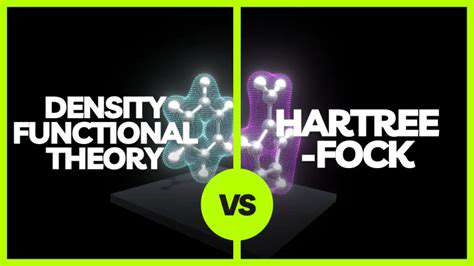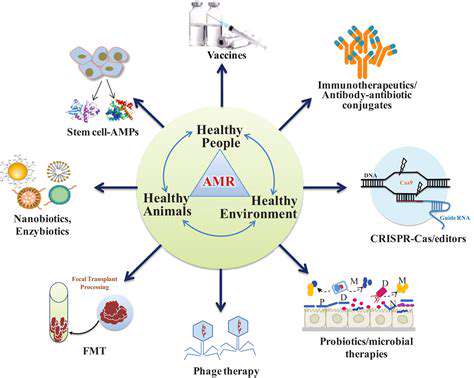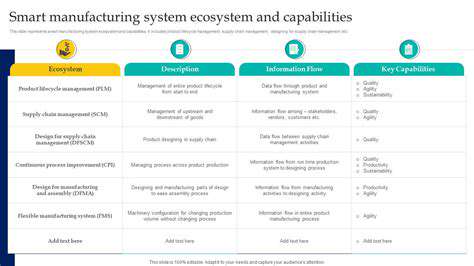
Hartree-Fock Method
The Hartree-Fock method is a powerful computational technique used in quantum chemistry to approximate the ground state of a many-electron system. It's an essential tool for understanding molecular structures and properties. This method addresses the complexities of electron-electron interactions by employing the variational principle, a cornerstone of quantum mechanics. It aims to find the best possible approximation for the wavefunction of the system, which then allows for the calculation of various properties like energy, dipole moment, and more.
A key aspect of Hartree-Fock is the approximation of the many-electron wavefunction as a single Slater determinant. This simplifies the calculation significantly, but it also means that electron correlation, which is the interaction between electrons beyond the mean-field approximation, is not fully accounted for. This approximation often yields good results for calculating molecular structures, but can lead to inaccuracies in properties that are highly sensitive to electron correlation.
Density Functional Theory (DFT)
Density Functional Theory (DFT) provides an alternative approach for dealing with many-electron systems. Unlike Hartree-Fock, which focuses on the wavefunction, DFT focuses on the electron density. This shift in perspective can be computationally advantageous, particularly for larger systems. DFT's fundamental idea rests on the Hohenberg-Kohn theorems, which establish a connection between the electron density and the system's energy.
A key strength of DFT lies in its ability to handle electron correlation more effectively than Hartree-Fock. This often leads to more accurate results, especially for systems with strong electron correlation. DFT has become a widely used method in computational chemistry and materials science due to its balance of accuracy and computational efficiency.
Comparison of Hartree-Fock and DFT
While both Hartree-Fock and DFT are powerful tools for studying molecules, they differ significantly in their underlying approaches. Hartree-Fock methods are generally more straightforward to implement, especially for smaller molecules. However, DFT often provides more accurate results, particularly when dealing with systems that exhibit strong electron correlation. The choice between these methods often depends on the specific system being studied and the desired level of accuracy.
Another crucial difference is computational cost. Hartree-Fock calculations can be comparatively faster, while DFT calculations can become computationally expensive, especially for large systems. This is a significant factor in choosing the appropriate method for a particular research problem. The computational demands can vary greatly depending on the level of approximation used within each method.
Applications and Limitations
Both Hartree-Fock and DFT methods have broad applications in various scientific fields. They are indispensable tools for designing new materials, understanding chemical reactions, and studying biological systems. However, each method has its limitations. Hartree-Fock's inability to fully account for electron correlation leads to inaccuracies for certain properties, while DFT's approximations can also introduce errors, particularly in systems with strong electron correlation.
Despite these limitations, Hartree-Fock and DFT remain cornerstones of computational chemistry. Researchers frequently employ these methods in conjunction with other techniques to gain a more comprehensive understanding of complex systems. Their continued development and refinement contribute significantly to our ability to understand and predict the behavior of molecules and materials.
Beyond DFT: Advanced Techniques for Accurate Predictions
Beyond Density Functional Theory (DFT): Exploring Post-DFT Methods
While Density Functional Theory (DFT) has revolutionized quantum chemistry, its accuracy can be limited, particularly for systems with strong electron correlation, such as transition metal complexes, molecules with multiple bonds, or systems exhibiting significant excited-state character. This limitation necessitates the exploration of more advanced computational methods. Post-DFT techniques, building upon the groundwork of DFT, aim to improve accuracy by addressing these shortcomings. These advanced methods often involve incorporating higher-order correlation effects, which are crucial for precise predictions in various chemical phenomena, including reaction mechanisms, spectroscopic properties, and material design.
Many post-DFT methods exist, each with its own strengths and weaknesses. These methods typically incorporate more sophisticated treatments of electron correlation, often relying on perturbation theory, coupled-cluster theory, or Møller-Plesset perturbation theory. The choice of a specific post-DFT method depends heavily on the system being studied, the desired accuracy, and the computational resources available. Each method has its own computational cost and can be more computationally intensive than DFT, especially for larger systems. Careful consideration of these factors is crucial for optimal results.
Wave Function-Based Methods: A Deeper Dive into Electron Correlation
Beyond DFT, wave function-based methods offer a more direct approach to capturing electron correlation, often leading to higher accuracy predictions. These methods explicitly describe the wave function, which represents the probability of finding electrons at specific locations. This direct representation allows for a more comprehensive understanding of electron behavior, particularly in strongly correlated systems. Coupled-cluster theory, for example, is a powerful wave function-based method that can provide highly accurate results for a wide range of chemical systems by systematically accounting for electron correlation effects. This approach is particularly beneficial when exploring complex chemical reactions and molecular interactions.
Another important wave function-based method is configuration interaction (CI), which expands the wave function in terms of different electron configurations. This approach can be computationally demanding, but it offers significant potential for accurately describing the electronic structure of molecules, especially those with significant multi-reference character. Wave function-based methods, though more computationally intensive than DFT, can provide valuable insights into chemical phenomena that are not easily accessible by other approaches.
Furthermore, the development of more sophisticated and efficient algorithms for these methods continues to enhance their applicability to larger and more complex systems. This progress makes wave function-based methods increasingly valuable in pushing the boundaries of quantum chemical accuracy.
Simulating Molecular Dynamics and Reaction Pathways
Understanding Molecular Structures
Molecular simulations are crucial for comprehending the intricate structures of molecules, ranging from simple diatomic gases to complex biological macromolecules. By employing sophisticated algorithms, we can visualize and analyze molecular geometries, bond lengths, and angles. This detailed understanding of molecular structures is fundamental to predicting their behavior and interactions.
Exploring Potential Energy Surfaces
A key aspect of molecular dynamics simulations is the exploration of potential energy surfaces (PES). These surfaces represent the energy landscape of a molecule as a function of its atomic positions. Analyzing the PES reveals the stable conformations, transition states, and reaction pathways, providing valuable insights into molecular behavior.
Simulating Molecular Dynamics
Molecular dynamics (MD) simulations track the motion of atoms and molecules over time, mimicking their real-world behavior. This allows us to observe various processes, including diffusion, conformational changes, and chemical reactions. The accuracy of MD simulations depends heavily on the chosen force field and the timescale of the simulation.
Determining Reaction Pathways
Simulations play a pivotal role in identifying and characterizing reaction pathways. By tracking the evolution of molecules during a reaction, we can pinpoint the transition states, understand the energy barriers, and determine the kinetics of the process. This information is invaluable for designing catalysts and understanding chemical transformations.
Utilizing Quantum Mechanical Methods
Quantum chemistry methods are often integrated into molecular simulations to accurately capture the electronic structure and interactions within molecules. This allows for a more comprehensive understanding of the underlying mechanisms driving molecular behavior, particularly in reactions involving bond breaking and formation. These techniques are essential for simulating reactions in complex systems.
Applications in Materials Science
Molecular simulations have broad applications in materials science, enabling the design of new materials with specific properties. By simulating the behavior of atoms and molecules in different environments, we can predict the mechanical, thermal, and optical properties of materials. This predictive power is crucial for developing novel materials with enhanced performance.
Computational Challenges and Future Directions
Simulating complex molecular systems presents significant computational challenges. The increasing complexity of molecules and the need for longer simulation times necessitate the development of more efficient algorithms and powerful computing resources. Future research will focus on addressing these challenges and expanding the scope of molecular simulations to even more intricate systems, enabling advancements in various scientific fields.












